Haifa House by Pitsou Kedem Architects
特别鸣谢翻译一组6号 席岳琳提供的翻译,译稿版权归译者所有,转载请注明出处
A private residence built in the center of a historic avenue and at the very heart of Haifa’s French Carmel neighborhood.The avenue is studded with a number of residences designed in the Bauhaus style. The Bauhaus style gained its hold in Israel in the wake of international styling trends and is a ornament free design style, both simple and down to earth. The style celebrated the aesthetics of the machine and was characterized by uniformity of color and by unassuming and simple finishes and facades. The style faithfully represented the spirit of the age and the location. This project, designed decades later, creates a line that connects contemporary styling with the spirit of that bygone era.
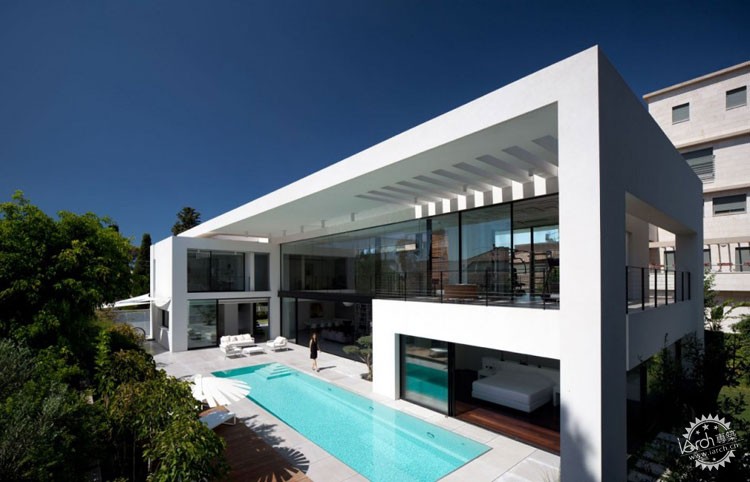
The project emphasizes and sharpens the differences between apparently similar design styles of contemporary minimalism influenced by Japan and the austere moderation of the modernism that characterized the end of the 1950s. Both of these paradigms translate into a way of life, to the Israeli environment and climate. The sophistication and the minimalism that existed at the heyday of the Bauhaus period have been translated, in this latest reincarnation, into a spacial purity and prestigious restraint. In his design, the architect has expressed his own, localized interpretation for free planning in which there is a spacial continuity achieved through light, appearance and movement and the placement of secondary spaces around one, large and open central space. The architect has succeeded in creating the experience of continuous, intimate and defined spaces with different levels of symbiotic, mutual interaction with the central space and yet without detracting from the overall understanding of the structure. Despite the intensification of the residences central space which finds expression in a double sized open space reaching the entire height of the building with one completely transparent façade facing the direction of the courtyard, through the use of controlled and restrained formality and the use of materials with no external facings, the designer has succeeded in showing his belief that it is possible to create a residential space of quality and timelessness. In an attempt to connect with the historic avenue and the houses that have inhabited it since the 1950s, the architect has paid great attention to homes front facing façade. The front of the building is almost anonymous, for the most part, a closed element, free of unnecessary ornamentation and one that combines a monochromatic color scheme based on the grays and whites that characterized that same era. Only the floating upper roof hints at a harmony with contemporary design. There is a sense of acceptance of the avenues importance and an attempt to assimilate into its, fragile and gentle structure and in no way try to force contemporary architecture on the surrounding environment. Only the floating mass of the roof hints that, despite the desire to be part of the avenues context and the spirit of that historical period, it is clear to the observer that here we have a bold attempt to create an architectural language that leaves a clear signature and the fingerprint of the designer.
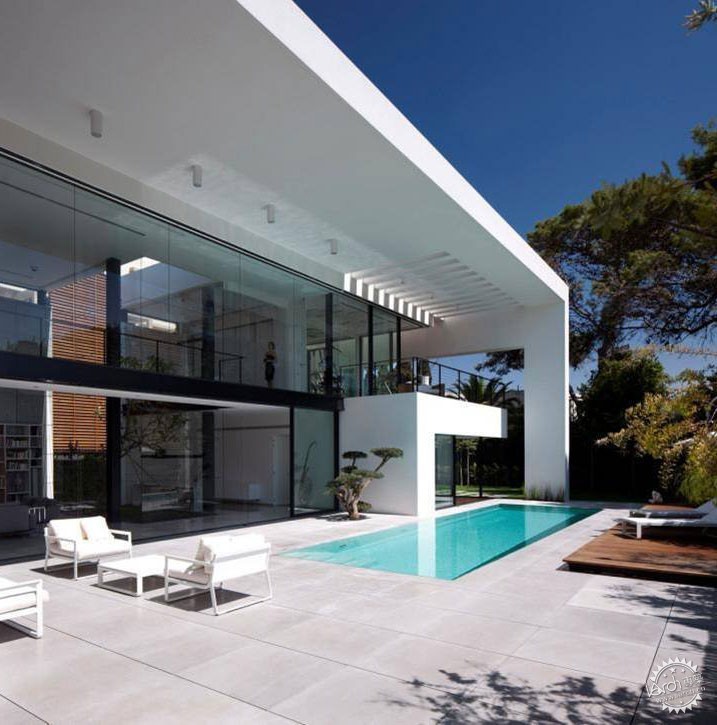
The home was, as said, designed around a wide, high public space that constitutes the connecting point and provides a view of all of the homes different wings as well as to the central courtyard and the pool. In order to further strengthen the impact of the central space it has been coated with exposed concrete panels and a large library on the wall as a central motif. A large, ribbon window allows light to enter deep into the space, creating movement and dynamism on the central wall. The architect has covered all of the structures spaces with an expansive roof which appears to be suspended, weightless in the air and floating effortlessly with no apparent means of support. The roof frames and consolidates the various parts of the structure with the apparent dissociation between the roof and the building creating an impressive, formal dialogue. Movement within the house is accompanied by different views of the outside environment; exposed and open areas and other areas that are framed and focused on a specific view that was designed specifically for that area. The underlying concept of the homes design is one of quiet and formal restraint; the home is a place of tranquility and calm where the minimalistic details, the clean language and the meaning, separate the residents from the world outside. The architecture and the interior design combine a climatic relationship with light and air, an expression of the homes functionality and the uniform design lines both internal and external. The materials and the colors used for both the interior and the exterior range from white to gray combined with wooden strips. The simple, clean shapes and the light play a central role in the interior design. Shade and light create ever changing performances of shapes and movement, “playing” on the walls, the ceilings and the floors of the building throughout the day. The combination of the geometric light shows against the horizontal and vertical surfaces, made from many different materials, creates a unique atmosphere in the internal spaces and the house’s exterior that make a powerful statement of uniformity and calmness. During the day, natural light entering the residence and its movement creates absorbing light shows. At night, when darkness falls, artificial light, and especially the light seeping out from the pool, create within the structures spaces a totally different atmosphere, one that is almost mystical and magical. The design of the courtyard is characterized by the same restraint of form with the choice of trees and their placement also communicates with the avenue and the surrounding environment. And so, despite the fact that different worlds and different eras exist in the space between the historical Bauhaus of the avenue and that of this modern and minimalistic home, there still exists a relationship between them, a feeling that one is not strange to the other.
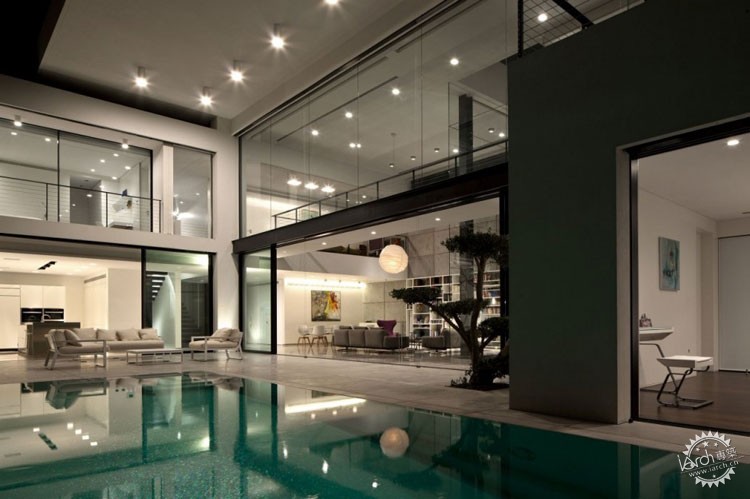
译文:法国卡梅尔社区中央历史街区新建了一座私人住宅。 私人住宅所在的历史街区到处充斥着包豪斯风格的古典主义建筑。国际风兴起之后,包豪斯风格漂洋过海,在以色列生根发芽,并进一步演化成自由装饰的设计风格,设计风格趋向简单踏实。包豪斯设计风格的主要特点是设计中一并应用了机器美学、色彩一致原理和简单谦逊的立面设计风格,这种设计风格忠诚的反映了当时年代和地域的需要。而几十年后设计完成的本项目,则很好的连接起了包豪斯风格和现代建筑精神。 设计工程着重强调了两种设计风格的差别,一种是日本影响下的现代主义极简派艺术设计,而另一种是兴盛于20世纪50年代的现代主义适度装饰设计(包豪斯风格)。包豪斯全盛期设计的复杂和极简化在这座住宅建筑语汇中被翻译成了空间的纯粹和权威的限定。
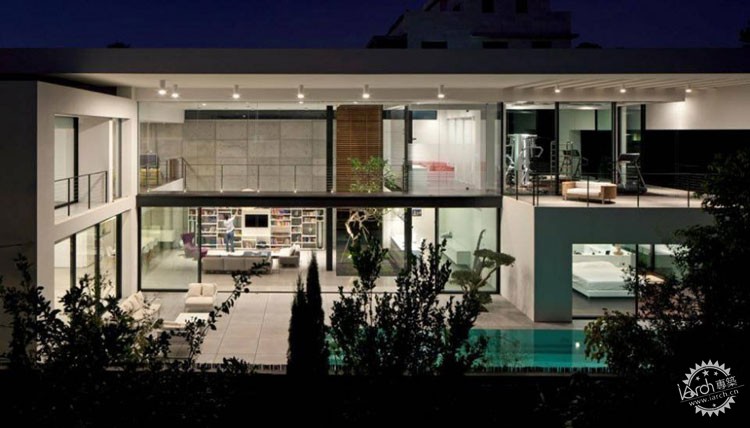
在他的设计作品中,建筑师用设计的语汇给我们着重解释了自由空间:通过空间之间的光线,外观和空间串联布置来营造空间的连续,通常环绕在一个巨大的开敞的中央空间周围。建筑师成功营造了连续的,亲密的以及不同水平相互共生的限定空间,以及主次要空间之间积极互动。尽管该住宅的中庭的面积相当于其他空间的两倍,高度相当于整座建筑总高,同时面向院落的一面全部采用玻璃幕,中庭的主要地位显而易见,通过对已有空间的限定和控制以及非立面材质选择,设计师仍然成功的展现了他的设计理念:创造一种有品质的永恒的居住空间。
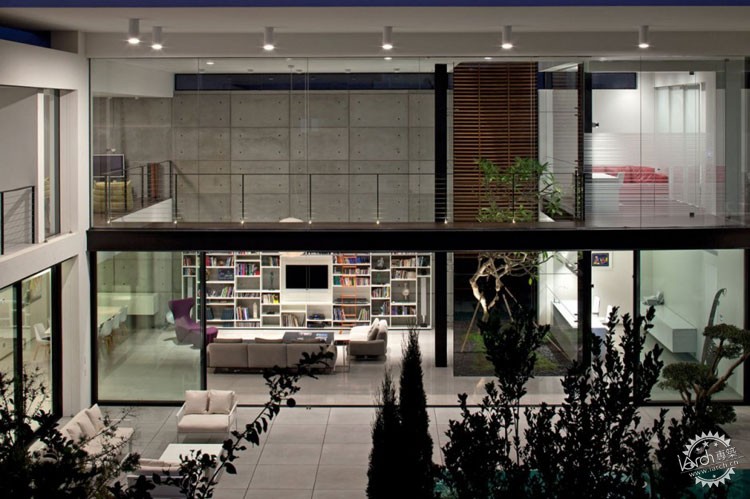
为了能够与整座历史街区和20世纪50年代就已经建设完成的住宅相互融合,设计师在住宅正立面的设计上煞费苦心。建筑的立面几乎是朴素简洁的。除去不必要的装饰,建筑主体绝大部分采用灰白连接。仅仅挑起的屋顶才暗示出建筑在作为城市组成部分的同时也要创造出独树一帜的建筑语言的想法。 据说,设计完成的住宅就在构成连接点的高档社区周边,提供了能够看到周边所有高档社区的观测点,同时提供了中心院落和泳池。为了强化中央空间的影响力,住宅表层用混凝土板材覆盖,墙体用巨大的书架作为主体背景。巨大的带型窗使室内深度采光均匀充分,斑驳光线还给中央背景墙增添活力。屋顶出檐深远,遮盖住了整座建筑,质量很轻,远远看去像是悬浮在空中一样。屋顶构架和支撑屋顶的构架共同创造了动人而规则的空间对话。
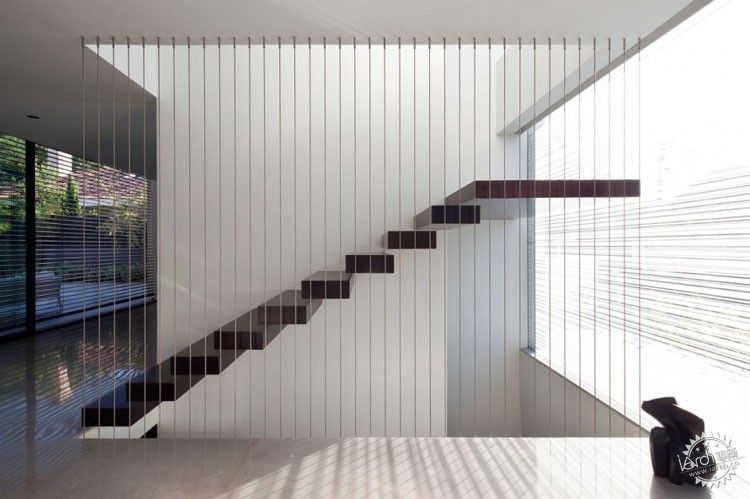
建筑室内设计步移景异,室内布局和室外空间甚至包括构成景观的元素设计都摆放到恰到好处。住宅设计的第一理念就是希望创作一个安静,正式的空间限定;住宅是一个宁静的场所,那里,极简主义的细节设计,纯净的设计语汇和意图,把住宅与外部空间有效的分割开来。建筑设计和室内设计通过光与空气有效联系,设计既符合功能要求同时室内室外的设计统一整体。 建筑室内外所用的材料和颜色从白到灰间歇夹带着原木木纹。对于室内设计,简约纯净的体型和光线在这里扮演了十分重要的角色。白天,光影的变化创造了形体和形状的改变,光线映照到墙体上,屋顶和地面充满了斑驳的变幻。不同的几何光线照在水平和垂直物体表面伴随着不同的材质,创造出统一的室内氛围和安静的外部环境。此时的自然光被住宅全部吸收,夜间,黑暗降临,室内光,尤其是水池中反射的点点星光,创造出完全不同的氛围:充满梦幻的神秘景象。
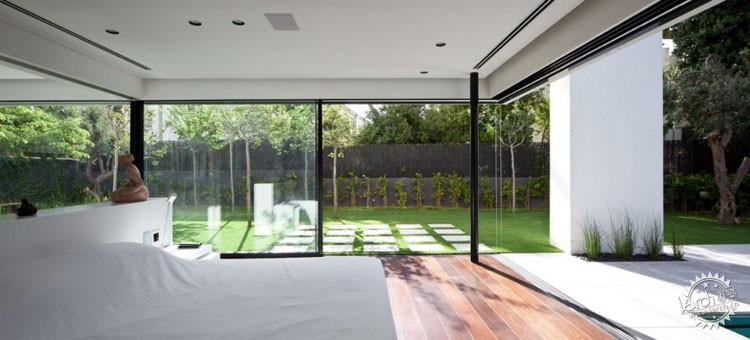
院落的设计以树木的栽种位置和树木排列为特点,同时积极融入到历史文化街区的整体环境中。于是,尽管事实是历史性很浓的包豪斯街区和极简主义的现代住宅属于不同年代不同世界,新建住宅仍然能够通过设计来建立一种关系,一种使得两者不再陌生的关系。
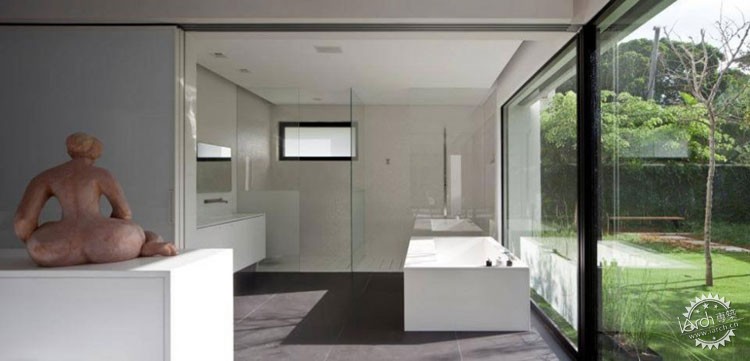
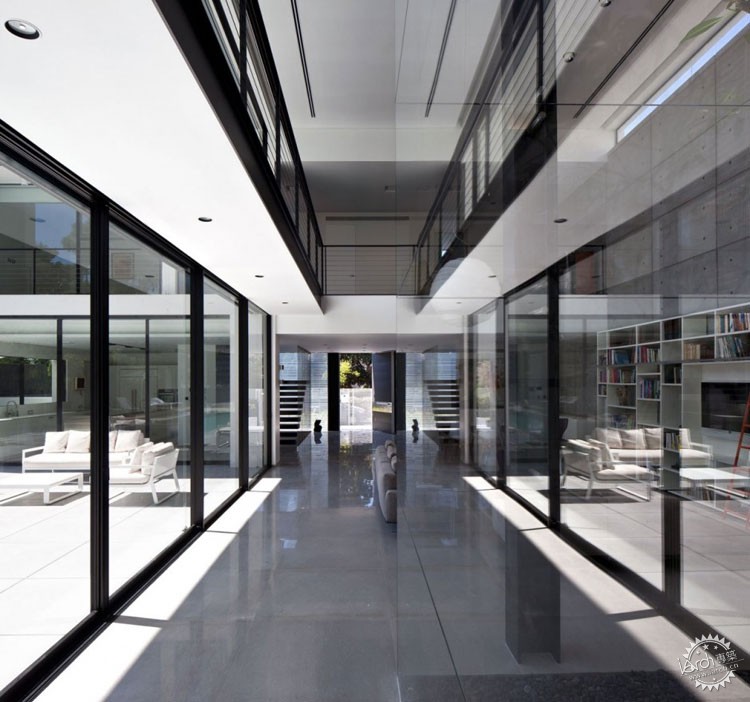
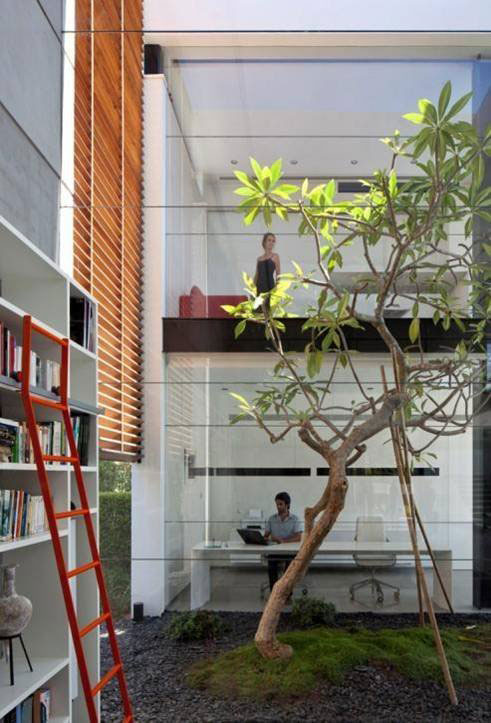

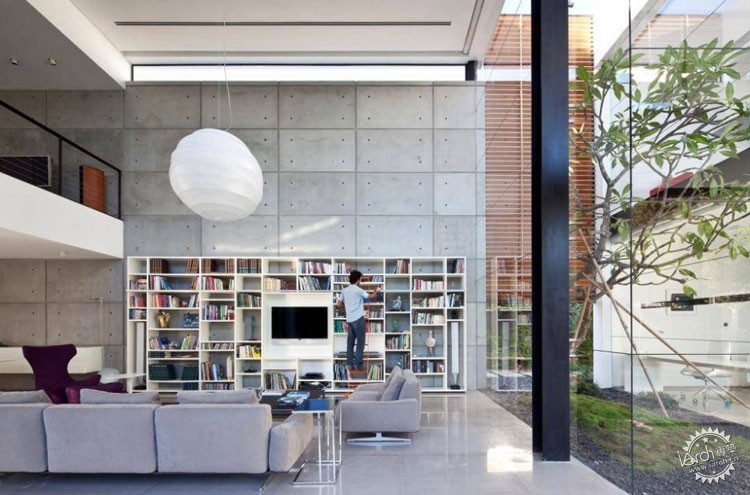
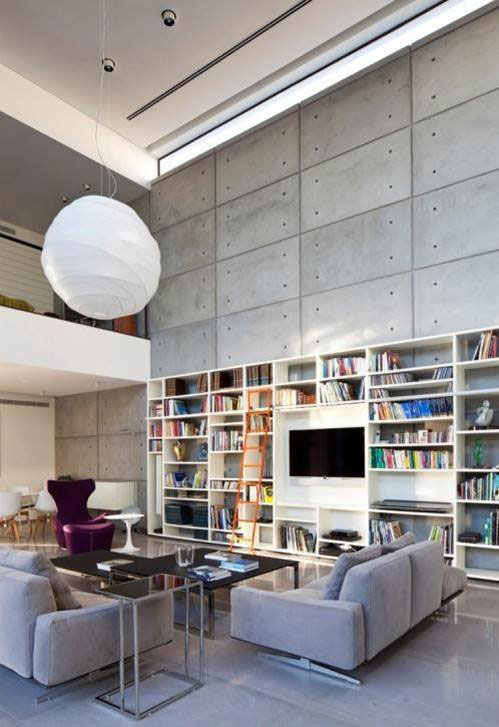
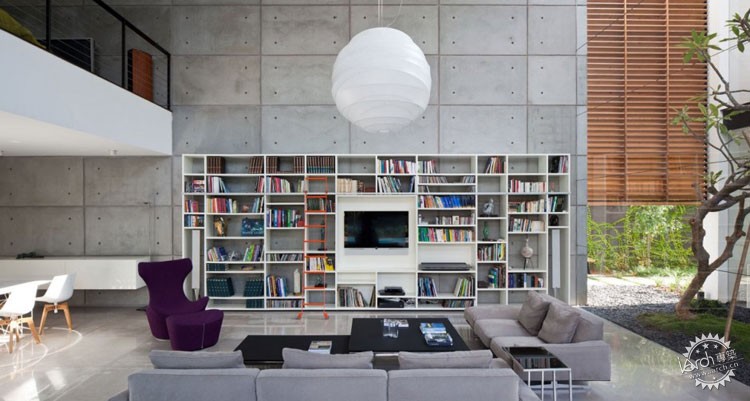

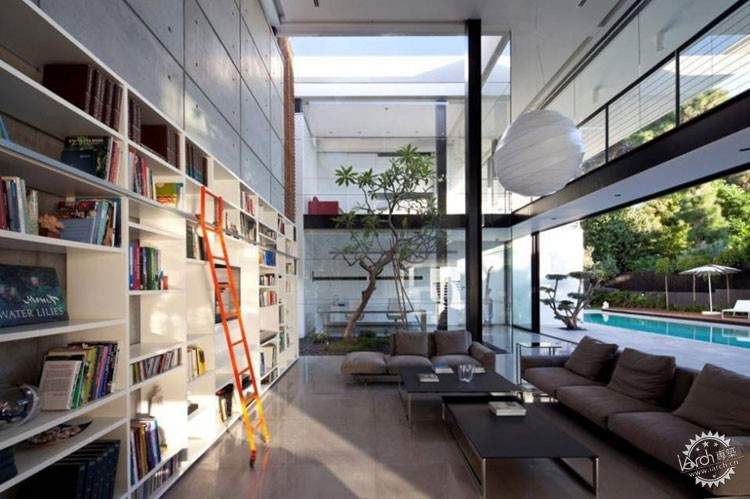
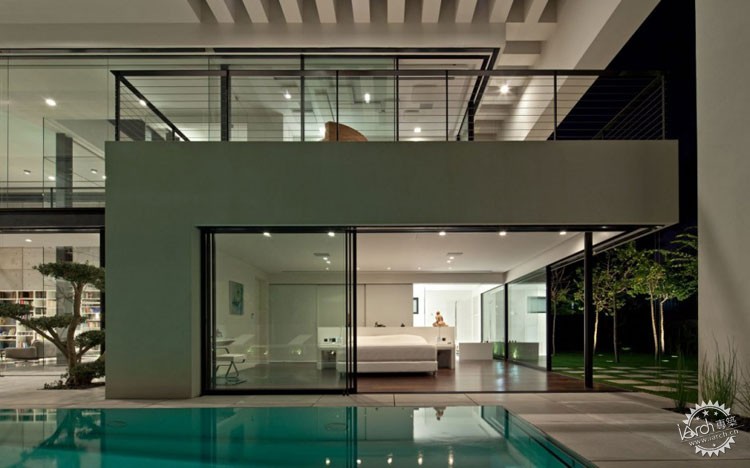
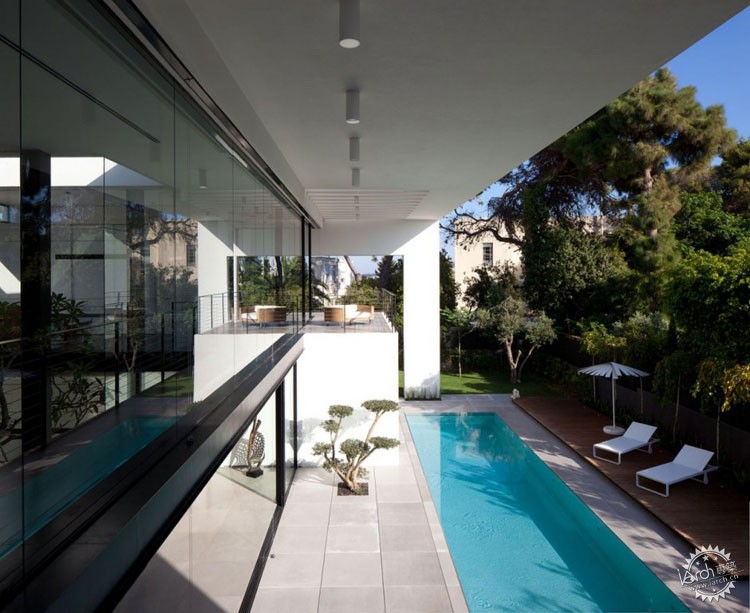
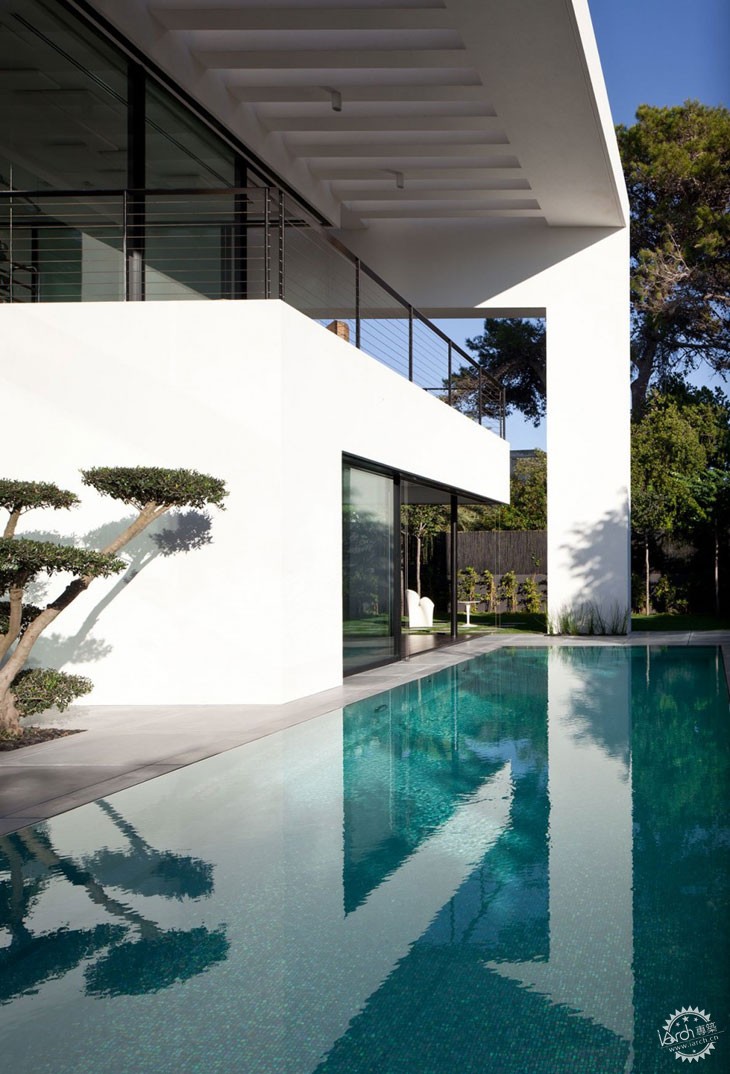
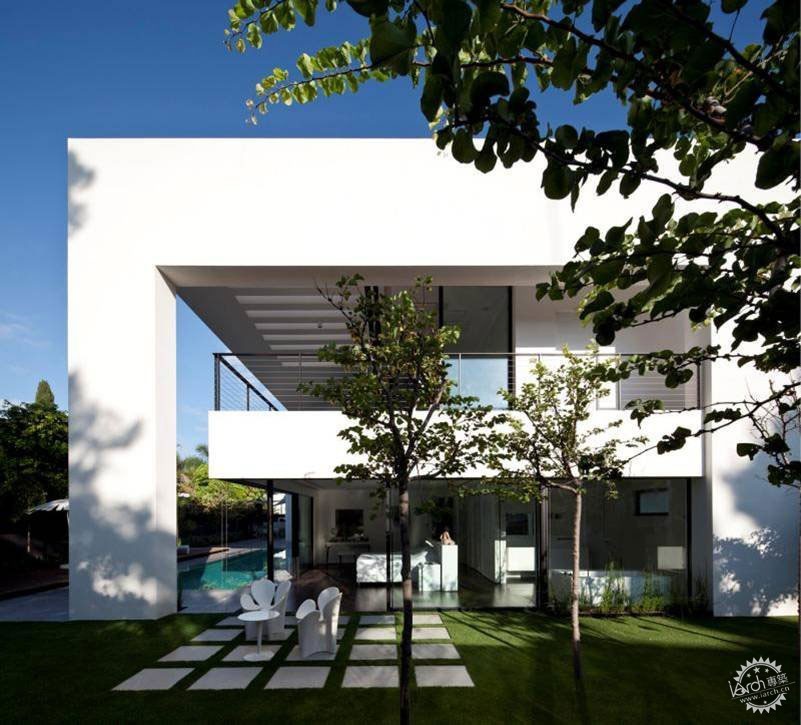
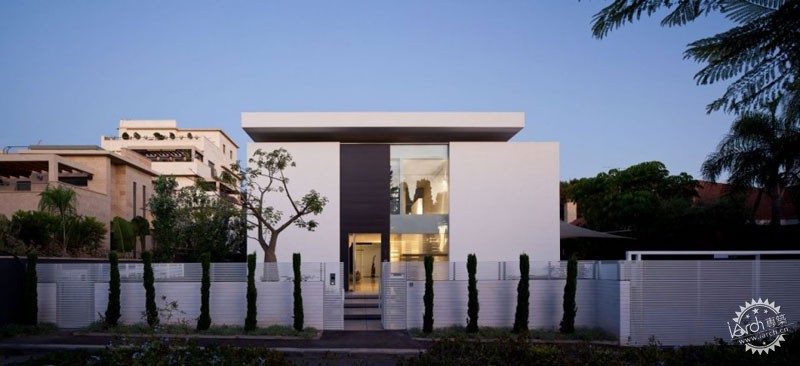
| 